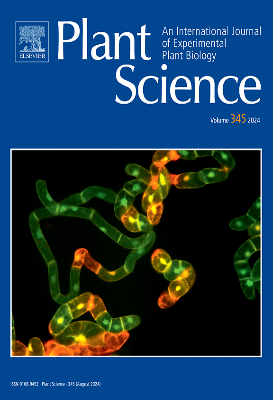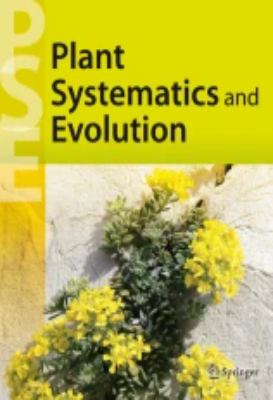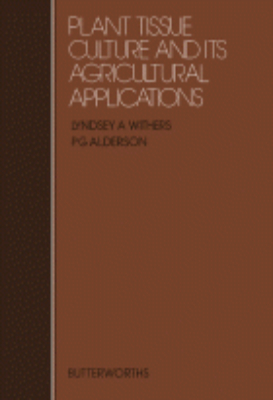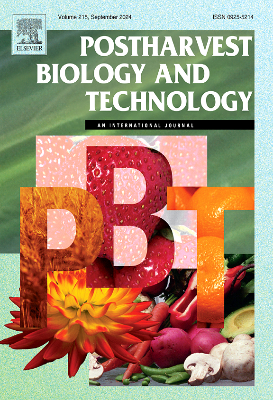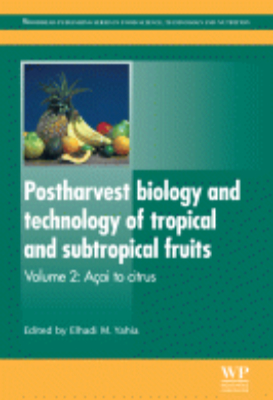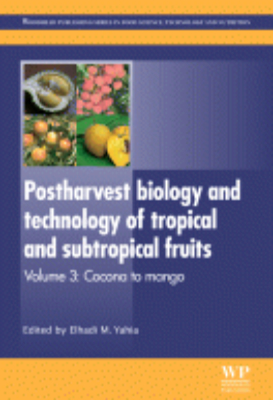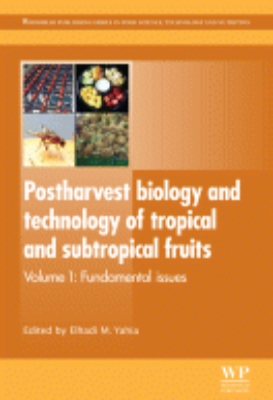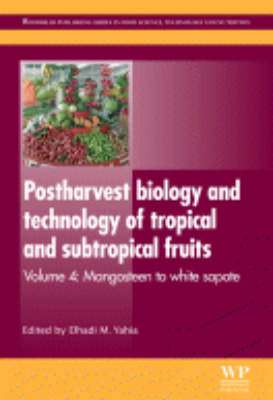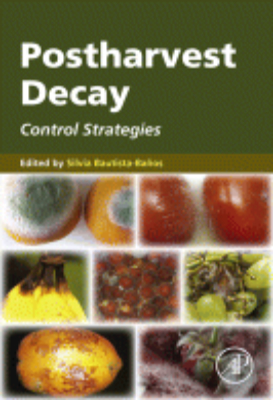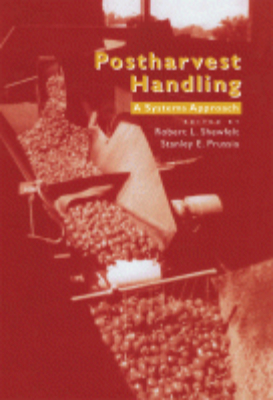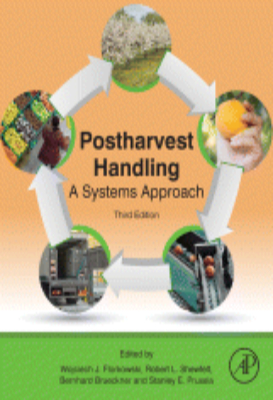Agricultural Science
Plant Proteins
Plant Proteins is a compendium of papers discussing, in general, plant proteins as materials for human foods, and in particular, the properties, biosynthesis, deposition of reserves in seeds, undesirable factors, production, and nutritional aspects of plant proteins in the food industry. Some papers review the properties and biosynthesis of plant proteins, the synthesis of chloroplast proteins, and legume seed proteins. Other papers discuss the development of protein reserves in seeds, as well as the toxicity and antagonistic actions in relation to amino acid and protein synthesis. One paper examines the world supply and demand for sources of protein from three plant sources, namely cereals, oilseeds, and legumes. Another paper discusses the capabilities of certain species of micro-organisms to synthesize from a few simple raw materials all the main components needed in the diet of a human or a farm animal. One paper notes that the acceptance of plant protein foods in society depends on their presentation, flavor, texture, appearance, identity, and product name. This compendium will benefit agronomists, agriculturists, biochemists, microbiologists, nutritionists, botanists, chemists, economists, food scientists, physicists and plant breeders.
Plant Resource Allocation
"Plant Resource Allocation is an exploration of the latest insights into the theory and functioning of plant resource allocation. An international team of physiological ecologists has prepared chapters devoted to the fundamental topics of resource allocation. Key Features. Comprehensive coverage of all aspects of resource allocation in plants. All contributors are leaders in their respective fields"
Plant Resources of Arid and Semiarid Lands
Plant Resources of Arid and Semiarid Lands: A Global Perspective is a collection of papers that evaluates the existing native plant resources in the arid and semiarid regions. The papers deal with the resources found in these arid regions such as food potential, forage, fuel, fiber, medicinal or industrial uses. The book covers the arid regions of Africa, Australia, the Indian subcontinent, Middle East, North America, China, South America, and the USSR. The treatment of these regions includes geographical descriptions such as area, annual precipitation, temperature, humidity, wind ranges or patterns, and seasons. These papers also discuss the effects of topography on water drainage and loss, the basic soil types, holding capacity, water runoffs, and the availability of water (surface and subsurface), The book examines the current and projected growth rates for relevant countries and dry regions in each continent. These papers discuss the economic output from arid lands, the balance of trade, current or developing resources, as well as the prospects of these countries with dry regions. The book also focuses on the types of plants found in these regions whether these are used for food, forage, medicine or for industry. This collection is suitable for environmentalists, ecologists, sociologist, anthropologists, and researchers involved in biological and environmental conservation.
Plant Responses and Control of Water Balance
Water Deficits and Plant Growth, Volume III: Plant Responses and Control of Water Balance focuses on the influence of water deficits on shrinkage of plant tissues, seed germination, reproductive growth, and internal plant responses such as protoplasmic resistance to desiccation, enzymatic activity, nitrogen metabolism, hormonal relations, and mineral nutrition. This book also considers alleviation and control of water deficits in plants. This volume is organized into 10 chapters and begins with an overview of shrinkage and swelling in plant tissues and their biological implications, along with some basic aspects of seed germination and environmental factors affecting germination as well as its relation to soil moisture. The discussion then shifts to the impact of water deficits on growth of fruits at different stages of development, from flowering to fruit ripening, and the ability of the protoplasm to survive a serious reduction in water content (known as protoplasmic resistance). The following chapters explore the effects of water deficits on enzyme activity, nutrient availability, nitrogen metabolism, and hormonal distribution in plants. This book also looks at transpiration in plants and how to reduce it, and then concludes with a chapter on soil water conservation as a problem of management of available water resources in the context of agriculture. This book is a valuable resource for scientists and investigators in fields such as botany, plant pathology, forestry, and agriculture.
Plant Stems
"Stems, of various sizes and shapes, are involved in most of the organic processes and interactions of plants, ranging from support, transport, and storage to development and protection. The stem itself is a crucially important intermediary: it links above- and below ground organs-connecting roots to leaves. An international team of leading researchers vividly illustrate that stems are more than pipes, more than simple connecting and supporting structures; rather stems are critical, anatomically distinct structures of enormous variability. It is, to an unappreciated extent, this variability that underpins both the diversity and the success of plants in myriad ecosystems. Plant Stems will be a valuable resource on form/function relationships for researchers and graduate-level students in ecology, evolutionary biology, physiology, development, genetics, agricultural sciences, and horticulture as they unravel the mechanisms and processes that allow organisms and ecosystems to function. Key Features. Syntheses of structural, physiological, and ecological functions of stems. Multiple viewpoints on how stem structure relates to performance. Highlights of major areas of plant biology long neglected"
Plant Tissue Culture and Its Agricultural Applications
Plant Tissue Culture and Its Agricultural Applications presents the proceedings of the 41st University of Nottingham Easter School in Agricultural Science held in England. The sessions covered in this volume reflect the revolution of tissue culture and its role in the propagation of elite plant material and the development of improved genotypes. This book is organized into four main sections. The first section chronicles the revolution of the plant tissue culture. This includes papers on clonal propagation, morphogenesis, germplasm storage, plant health, and genetic improvement. The core of this volume is covered by the introductory and the final chapters which interrelate the different subjects areas covered by the proceedings and provide a realistic assessment of future research required for the plant tissue culture revolution to come to fruition. This book will be useful to readers interested in understanding the history, evolution, and future of plant tissue culture and its applications in the agricultural sector.
Plant Tissue Culture: 1981
Plant Tissue Culture: Methods and Applications in Agriculture contains the proceedings of a symposium based on the UNESCO training course on Plant Tissue Culture: Methods and Applications in Agriculture, sponsored by UNESCO and held in Campinas, Sao Paulo, Brazil, on November 8-22, 1978. This book contains two major sections encompassing plant tissue culture: Part A, which focuses on methodology, and Part B, which emphasizes the applications. The first chapters present the requirements for a tissue culture facility, and then describe nutrition, media, and characteristics of cultured plant cells and their growth and behavior in vitro, particularly with reference to embryogenesis and organogenesis. Discussions on protoplasts, mutagenesis and in vitro selection, meristem culture, freeze preservation, and cytogenetic techniques complete Part A. In Part B, androgenesis, in vitro fertilization, and embryo culture are discussed. Some chapters follow on the application of in vitro methodology to selected crops. The final chapter deals with the potential of tissue culture in the biosynthesis of secondary products. This text will prove useful to those who must thoroughly plan their research in tackling problems in agriculture that are amenable to the tissue culture approach.
Plant Tissue Culture: 1992
Plant Tissue Culture Techniques and Experiments is a manual that contains laboratory exercises about the demonstration of the methods and different plant materials used in plant tissue culture. It provides an overview on the plant cell culture techniques and plant material options in selecting the explant source. This book starts by discussing the proper setup of a tissue culture laboratory and the selection of the culture medium. It then explains the determination of an explant which is the ultimate goal of the cell culture project. The explant is a piece of plant tissue that is used in tissue culture. Furthermore, the book discusses topics about callus induction, regeneration and morphogenesis process, and haploid plants from anther and pollen culture. The meristem culture for virus-free plants and in vitro propagation for commercial propagation of ornamentals are also explained in this manual. The book also provides topics and exercises on the protoplast isolation and fusion and agrobacterium-mediated transformation of plants. This manual is intended for college students, both graduate and undergraduate, who study chemistry, plant anatomy, and plant physiology.
Plant Tissue Culture: 2013
"Plant Tissue Culture, Third Edition builds on the classroom tested, audience proven manual that has guided users through successful plant culturing A.tumefaciens mediated transformation, infusion technology, the latest information on media components and preparation, and regeneration and morphogenesis along with new exercises and diagrams provide current information and examples. The included experiments demonstrate major concepts and can be conducted with a variety of plant material that are readily available throughout the year. This book provides a diverse learning experience and is appropriate for both university students and plant scientists. Key Features. Provides new exercises demonstrating tobacco leaf infiltration to observe transient expression of proteins and subcellular location of the protein, and information on development of a customized protocol for protoplast isolation for other experimental systems. Includes detailed drawings that complement both introductions and experiments. Guides reader from lab setup to supplies, stock solution and media preparation, explant selection and disinfestations, and experimental observations and measurement. Provides the latest techniques and media information, including A. tumefaciens mediated transformation and infusion technology. Fully updated literature"
Plant Transcription Factors
"Plant Transcription Factors: Evolutionary, Structural and Functional Aspects is the only publication that provides a comprehensive compilation of plant transcription factor families and their complex roles in plant biology. While the majority of information about transcription factors is based on mammalian systems, this publication discusses plant transcription factors, including the important aspects and unifying themes to understanding transcription factors and the important roles of particular families in specific processes. Key Features. Provides an entry point for transcription factor literature. Offers compilation of information into one single resource for rapid consultation on different plant transcription factor features. Integrates the knowledge about different transcription factors, along with cross-referencing. Provides information on the unique aspects surrounding plant transcription factors"
Plants and Organelles
Nucleotide Sequences 1986/1987, Volume IV: Plants and Organelles presents data that reflect the information found in GenBank Release 44.0 of August 1986. This book provides information pertinent to the unique international collaboration between two leading nucleotide sequence data libraries, one based in Europe and one in the United States. Organized into two sections, this volume begins with an overview of the sequences, some basic identifying information, and some of the biological annotations. This text then discusses the EMBL Nucleotide Sequence Data Library, an international center of fundamental research with its main focus in the fields of cell biology, molecular structures, instrumentation, and differentiation. This book discusses as well the GenBank database established in 1982 by the National Institute of General Medical Sciences of the U.S National Institutes of Health. This book is a valuable resource for molecular biologists and other investigators collecting the large number of reported DNA and RNA sequences and making them available in computer-readable form.
Plants Chemicals and Growth: Volume 1
Plants, Chemicals and Growth investigates natural and synthetic chemicals that control plant growth and development. It examines how plant growth regulators, such as 2,4-D, 2,4-dichlorophenoxyacetic acid, 2,4,5-T, 2,4,5-trichlorophenoxyacetic acid, ammonium sulfamate, indole-3-butyric acid, disodium 3,6-endoxohexahydrophthalate, gibberellic acid, and 2-chloroethyltrimethylammonium chloride, induce biological responses in plants. These responses range from tropism and chemotropism to growth of organs by cell division and enlargement, rhythmic phenomena in growth and development, initiation of lateral organs and problems of phyllotaxy, and the regulatory effects of light and temperature on growth and form. Comprised of 10 chapters, this volume begins with an overview of chemical regulators and the ways in which they elicit biological responses in plants; how chemical regulation of plants is related to the growth and development of flowering plants; cell growth and cell division; cell cycle; and cellular ontogeny. It then looks at the history and modern concepts of growth-regulating compounds, such as auxins, cytokinins, and gibberellins. The book introduces readers to how chemicals induce growth in quiescent cells; natural sources of growth stimulatory substances; synergisms and interactions of growth regulatory systems; growth-regulating effects in free cell systems; examples of biologically active compounds; the mechanisms of action of plant growth regulators; concepts and interpretations of plant growth regulation; and prospects and problems associated with chemical regulation of plant growth and behavior. Teachers, biology students, agriculturalists, and researchers will find this book extremely useful.
Plants Chemicals and Growth: Volume 2
Plants, Chemicals and Growth focuses on chemicals that regulate the growth and development of plants. It explores the problems of growth and growth regulation by looking at the roles of chemical substances, natural and synthetic, which affect the behavior of the cells of flowering plants. It also describes the variety of responses triggered by such chemicals, which include herbicides, those that stimulate the rooting of cuttings or cause leaf or fruit abscission, and those associated with fruit setting and artificial parthenocarpy. Comprised of 10 chapters, this volume begins with an overview of examples of chemical regulators and the biological responses they induce in plants, from tropism and chemotropism to nastic responses; rhythmic phenomena in growth and development; initiation of lateral organs and problems of phyllotaxy; periodicities in growth; and effects on the balance between vegetative growth, flowering, and fruiting. It discusses the totipotency and exogenous regulation of cells, history and modern concepts of plant growth regulators, the ways chemicals induce growth in quiescent cells, and growth-regulating effects in free cell systems. The reader is also introduced to biologically active compounds, such as indolyl and triazine compounds; how plant-regulating substances work; concepts and interpretations of plant growth regulation; and problems and prospects of chemical regulation of plant growth and development. This book will be of interest to teachers, biology students, agriculturalists, and researchers.
Polyphenols in Plants
"Polyphenols in Plants assists plant scientists and dietary supplement producers in assessing polyphenol content and factors affecting their composition. It also aids in selecting sources and regulating environmental conditions affecting yield for more consistent and function dietary supplements. Polyphenols play key roles in the growth, regulation and structure of plants and vary widely within different plants. Stress, growth conditions and plant species modify polyphenol structure and content. This book describes techniques to identify, isolate and characterize polyphenols, taking mammalian toxicology into account as well. Key Features. Defines conditions of growth affecting the polyphenol levels. Describes assay and instrumentation techniques critical to identifying and defining polyphenols, critical to researchers and business development. Documents how some polyphenols are dangerous to consume, important to dietary supplement industry, government regulators and lay public users"
Postharvest Biology and Technology of Tropical and Subtropical Fruits: 2011 A?ai to Citrus
"While products such as bananas, pineapples, kiwifruit and citrus have long been available to consumers in temperate zones, new fruits such as lychee, longan, carambola, and mangosteen are now also entering the market. Confirmation of the health benefits of tropical and subtropical fruit may also promote consumption further. Tropical and subtropical fruits are particularly vulnerable to postharvest losses, and are also transported long distances for sale. Therefore maximising their quality postharvest is essential and there have been many recent advances in this area. Many tropical fruits are processed further into purees, juices and other value-added products, so quality optimization of processed products is also important. The books cover current state-of-the-art and emerging post-harvest and processing technologies. Volume 1 contains chapters on particular production stages and issues, whereas Volumes 2, 3 and 4 contain chapters focused on particular fruit. Chapters in Volume 2 review the factors affecting the quality of different tropical and subtropical fruits from aai to citrus fruits. Important issues relevant to each product are discussed, including means of maintaining quality and minimizing losses postharvest, recommended storage and transport conditions and processing methods, among other topics. With its distinguished editor and international team of contributors, Volume 2 of Postharvest biology and technology of tropical and subtropical fruits, along with the other volumes in the collection, will be an essential reference both for professionals involved in the postharvest handling and processing of tropical and subtropical fruits and for academics and researchers working in the area. Key Features. Along with the other volumes in the collection, Volume 2 is an essential reference for professionals involved in the postharvest handling and processing of tropical and subtropical fruits and for academics and researchers working in the area. Reviews the factors affecting the quality of different tropical and subtropical fruits from aai to citrus fruits. Important issues relevant to each particular fruit are discussed, including means of maintaining quality and minimising losses postharvest, recommended storage and transport conditions"
Postharvest Biology and Technology of Tropical and Subtropical Fruits: 2011 Cocona to Mango
"While products such as bananas, pineapples, kiwifruit and citrus have long been available to consumers in temperate zones, new fruits such as lychee, longan, carambola, and mangosteen are now also entering the market. Confirmation of the health benefits of tropical and subtropical fruit may also promote consumption further. Tropical and subtropical fruits are particularly vulnerable to postharvest losses, and are also transported long distances for sale. Therefore maximising their quality postharvest is essential and there have been many recent advances in this area. Many tropical fruits are processed further into purees, juices and other value-added products, so quality optimization of processed products is also important. The books cover current state-of-the-art and emerging post-harvest and processing technologies. Volume 1 contains chapters on particular production stages and issues, whereas Volumes 2, 3 and 4 contain chapters focused on particular fruit.Chapters in Volume 3 of this important collection review factors affecting the quality of different tropical and subtropical fruits, concentrating on postharvest biology and technology. Important issues relevant to each specific product are discussed, such as postharvest physiology, preharvest factors affecting postharvest quality, quality maintenance postharvest, pests and diseases and value-added processed products, among other topics. Key Features. Along with the other volumes in the collection, Volume 3 is an essential reference for professionals involved in the postharvest handling and processing of tropical and subtropical fruits and for academics and researchers working in the area. Covers current state-of-the-art and emerging post-harvest and processing technologies. Important issues relevant to each particular fruit are discussed, such as postharvest physiology, preharvest factors affecting postharvest quality and pests and diseases"
Postharvest Biology and Technology of Tropical and Subtropical Fruits: 2011 Fundamental Issues
"Tropical and subtropical fruits are popular products, but are often highly perishable and need to be transported long distances for sale. The four volumes of Postharvest biology and technology of tropical fruits review essential aspects of postharvest biology, postharvest technologies, handling and processing technologies for both well-known and lesser-known fruits. Volume 1 contains chapters on general topics and issues, while Volumes 2, 3 and 4 contain chapters focused on individual fruits, organised alphabetically.Volume 1 provides an overview of key factors associated with the postharvest quality of tropical and subtropical fruits. Two introductory chapters cover the economic importance of these crops and their nutritional benefits. Chapters reviewing the postharvest biology of tropical and subtropical fruits and the impact of preharvest conditions, harvest circumstances and postharvest technologies on quality follow. Further authors review microbiological safety, the control of decay and quarantine pests and the role of biotechnology in the improvement of produce of this type. Two chapters on the processing of tropical and subtropical fruit complete the volume.With its distinguished editor and international team of contributors, Volume 1 of Postharvest biology and technology of tropical and subtropical fruits, along with the other volumes in the collection, will be an essential reference both for professionals involved in the postharvest handling and processing of tropical and subtropical fruits and for academics and researchers working in the area. Key Features. Along with the other volumes in the collection, Volume 1 is an essential reference for professionals involved in the postharvest handling and processing of tropical and subtropical fruits and for academics and researchers working in the area. Focuses on fundamental issues of fruit physiology, quality, safety and handling relevant to all those in the tropical and subtropical fruits supply chain. Chapters include nutritional and health benefits, preharvest factors, food safety, and biotechnology and molecular biology"
Postharvest Biology and Technology of Tropical and Subtropical Fruits: 2011 Mangosteen to White Sapote
"While products such as bananas, pineapples, kiwifruit and citrus have long been available to consumers in temperate zones, new fruits such as lychee, longan, carambola, and mangosteen are now also entering the market. Confirmation of the health benefits of tropical and subtropical fruit may also promote consumption further. Tropical and subtropical fruits are particularly vulnerable to postharvest losses, and are also transported long distances for sale. Therefore maximising their quality postharvest is essential and there have been many recent advances in this area. Many tropical fruits are processed further into purees, juices and other value-added products, so quality optimisation of processed products is also important. The books cover current state-of-the-art and emerging post-harvest and processing technologies. Volume 1 contains chapters on particular production stages and issues, whereas Volumes 2, 3 and 4 contain chapters focused on particular fruit. Chapters in Volume 4 review the factors affecting the quality of different tropical and subtropical fruits from mangosteen to white sapote. Important issues relevant to each product are discussed, including means of maintaining quality and minimising losses postharvest, recommended storage and transport conditions and processing methods, among other topics. With its distinguished editor and international team of contributors, Volume 4 of Postharvest biology and technology of tropical and subtropical fruits, along with the other volumes in the collection, are essential references both for professionals involved in the postharvest handling and processing of tropical and subtropical fruits and for academics and researchers working in the area. Key Features. Along with the other volumes in the collection, Volume 4 is an essential reference for professionals involved in the postharvest handling and processing of tropical and subtropical fruits and for academics and researchers working in the area. Reviews factors affecting the quality of different tropical and subtropical fruits, concentrating on postharvest biology and technology. Important issues relevant to each particular fruit are discussed, such as postharvest physiology, preharvest factors affecting postharvest quality and pests and diseases"
Postharvest Decay
"Written by a diverse group of research professionals, Postharvest Decay: Control Strategies is aimed at a wide audience, including researchers involved in the study of postharvest handling of agricultural commodities, and undergraduate and graduate students researching postharvest topics. Growers, managers, and operators working at packinghouses and storage, retail, and wholesale facilities can also benefit from this book. The information in this book covers a wide range of topics related to selected fungi, such as taxonomy, infection processes, economic importance, causes of infection, the influence of pre-harvest agronomic practices and the environment, the effect of handling operations, and the strategic controls for each host-pathogen, including traditional and non-traditional alternatives. Key Features. Includes eleven postharvest fungi causing serious rots in numerous fruits and vegetables. Offers selected microorganisms including pathogens of commercially important tropical, subtropical and temperate crops worldwide, such as tomatoes, pears, apples, peaches, citrus, banana, papaya, and mango, among others. Presents content developed by recognized and experienced high-level scientists, working in the postharvest pathology area worldwide. Provides basic information about each fungus, pre- and postharvest factors that contribute to infection and control measurements, including the use of chemicals and non-traditional methods"
Postharvest Handling: 1993
"Postharvest Handling: A Systems Approach introduces a new concept in the handling of fresh fruits and vegetable. Traditional treatments have been either physiologically based with an emphasis on biological tissue or technologically based with an emphasis on storage and handling. This book integrates all processes from production practices through consumer consumption with an emphasis on understanding market forces and providing fresh product that meets consumer expectations. Postharvest physiologists and technologists across the disciplines of agricultural economics, agricultural engineering, food science and horticulture along with handlers of minially-processed products within the fresh produce fruit and vegetable processing industries will find this to be an invaluable source of information. Key Features
Postharvest Handling: 2014
"Postharvest Handling, Third Edition takes a global perspective in offering a system of measuring, monitoring, and managing produce processing to improve food quality, minimize food waste, reduce risks and uncertainties, and maximize time and resources. This unique resource provides an overview of the postharvest system and its role in the food value chain, and offers essential tools to monitor and control the handling process. It shows how to predict and combat unexpected events (e.g., spoilage), and manage the food quality and safety within a facility. Proven research methods and applications from various viewpoints are available to help you maintain high-quality produce and achieve the highest yields possible. The book also explores current challengesincluding oversupply, waste, food safety, lack of resources, sustainabilityand best practices for production to thrive in spite of these challenges. Key Features. Presents current research methods and applications in temperature control and heat treatments to help minimize moisture content, to prevent spoilage and mold, and more. Addresses challenges of traceability and sustainability. Presents testing and measurement techniques and applications. Provides technological tools to create crop value and improve both food safety and food quality"







